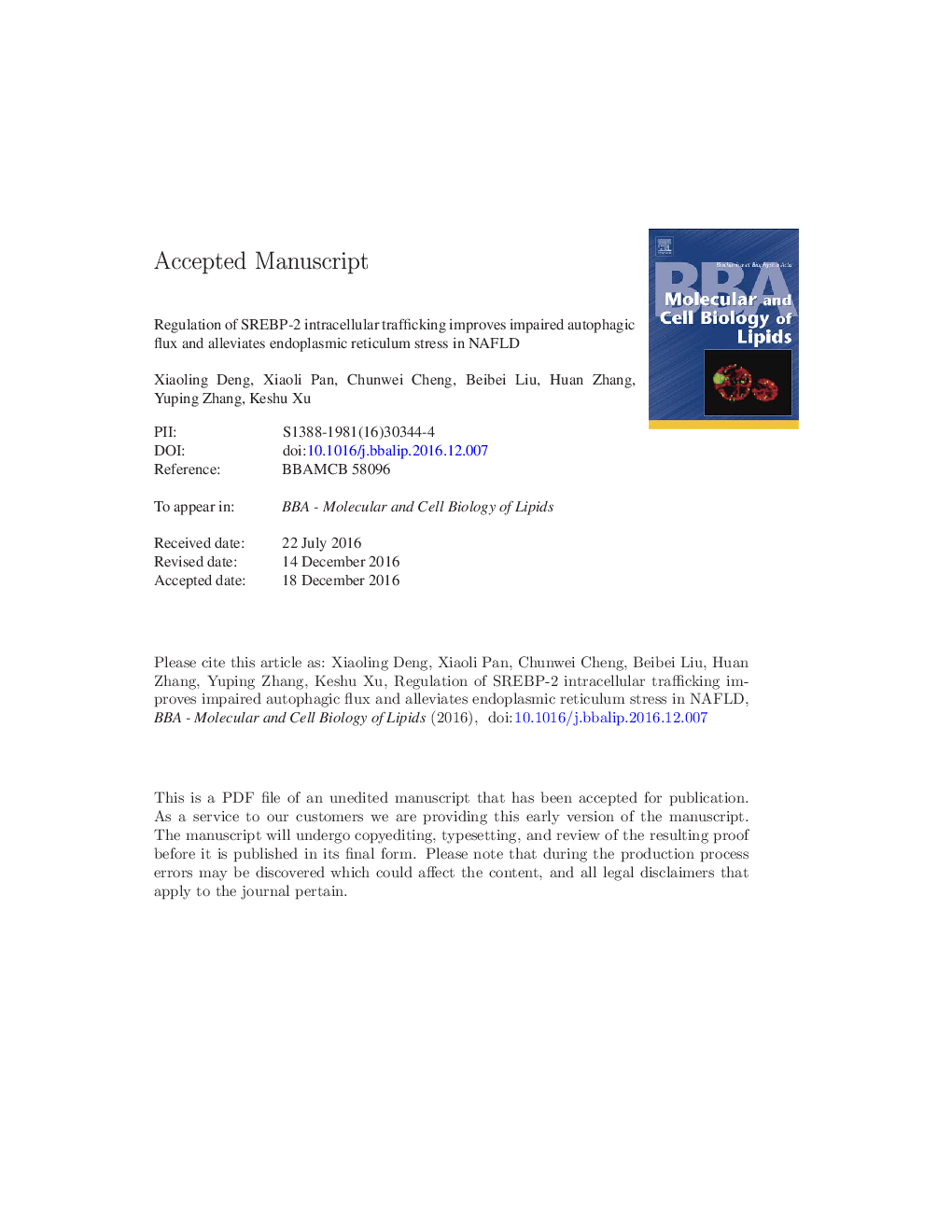| Article ID | Journal | Published Year | Pages | File Type |
|---|---|---|---|---|
| 5508290 | Biochimica et Biophysica Acta (BBA) - Molecular and Cell Biology of Lipids | 2017 | 30 Pages |
Abstract
Sterol regulatory element-binding protein 2 (SREBP-2), is a well-known transcriptional regulator of cholesterol metabolism. SREBP-2 is activated unconventionally to promote excessive cholesterol accumulation in non-alcoholic fatty liver disease (NAFLD). In addition, recent studies suggested that excessive lipid and cholesterol accumulation can weaken cellular autophagy function and promote endoplasmic reticulum stress (ERS). However, it remains unknown whether regulation of SREBP-2 processing modulates autophagy and ERS. In this study, we demonstrated that inhibition of SREBP-2 intracellular trafficking by site-1 protease (S1P) and site-2 protease (S2P) specific inhibitors, or shRNAs targeting S1P and S2P, upregulated gene and protein expression of autophagy markers, and improved the impaired autophagic flux induced in both cell and mouse models of NAFLD. Furthermore, increased lipid degradation by autophagy could repress PERK-P-EIF2α signaling. Taken together, these findings suggest that regulating the nuclear transport of SREBP-2 reduces lipid deposition and ERS via an autophagy-dependent pathway.
Keywords
Related Topics
Life Sciences
Biochemistry, Genetics and Molecular Biology
Biochemistry
Authors
Xiaoling Deng, Xiaoli Pan, Chunwei Cheng, Beibei Liu, Huan Zhang, Yuping Zhang, Keshu Xu,
